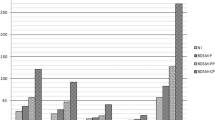Abstract
Objectives: This research addresses four questions: (1) What role do health care providers play in women's disclosure to others of their HIV-positive status? (2) What are women's concerns and experiences with disclosure? (3) What violence do women living with HIV experience? (4) How is the violence related to their diagnosis and disclosures? Methods: Participants were 310 HIV-positive women enrolled in an HIV primary care clinic in an urban teaching hospital. Women were interviewed once using both quantitative and qualitative methods. Results: Women had known they were HIV-positive for an average of 5.8 years; 22% had an HIV-positive partner; 58% had disclosed their status to more than 10 people; and 68% had experienced physical abuse and 32% sexual abuse as an adult. Fifty-seven percent of the sample reported that a health care provider had told them to disclose to their sex partners. Women who were afraid of disclosure-related violence (29%) were significantly more likely than those who were not to report that a health care provider helped them with disclosure (21% vs. 10%). Although 4% reported physical abuse following a disclosure event, 45% reported experiencing emotional, physical, or sexual abuse at some time after their diagnosis. Risk factors for experiencing abuse after diagnosis were a prior history of abuse, drug use, less income, younger age, length of time since diagnosis, and having a partner whose HIV status was negative or unknown. Conclusions: Identifying women at risk for abuse after an HIV-positive diagnosis is important for those who provide HIV testing and care. Routine screening for interpersonal violence should be incorporated into HIV posttest counseling and continuing primary care services.
Similar content being viewed by others
REFERENCES
Centers for Disease Control and Prevention. HIV/AIDS Surveill Rep 1999;11(1).
Abercrombie PD. Women living with HIV infection. Nurs Clin North Am 1996;31(1):97–106.
Semple RR, Moutlon JM, Moss AR. Self-disclosure of HIV-1 antibody test results: The San Francisco General Hospital cohort. AIDS Educ Prev 1993;7:116.
Chung J, Magraw M. Agroup approach to psychological issues faced by HIV-positive women. Hosp Commun Psychiatry 1992;43:891.
Gillman RR, Newman BS. Psychosocial concerns and strengths of women with HIV infection: An empirical study. Families Society J Contemp Hum Serv 1996;131.
Lester P, Partridge JC, Chesney MA, Cooke M. The consequences of positive prenatal HIV antibody test for women. J Acquir Defic Synd Hum Retrovirol 1995;10:341–9.
Gielen AC, O'Campo P, Faden RR, Eke A. Women's disclosure of HIV status: Experiences of mistreatment and violence in an urban setting. Women Health 1997;25(3):19–31.
North RL, Rothenberg KH. Partner notification and the threat of domestic violence against women with HIV infection. N Engl J Med 1993;329:1194–6.
Rothenberg KH, Paskey SJ, Reuland MM, Zimmerman SI, North RL. Domestic violence and partner notification: Implications for treatment and counseling of women with HIV. JAMA 1995;50:97.
Vlahov D, Wientge D, Moore J, Flynn C, Shumann P, Schoenbaum E, Zierler S. Violence among women with or at risk for HIV infection. AIDS Behav 1998;2:53.
Centers for Disease Control. Partner notification for preventing human immunodeficiency virus (HIV) infection—Colorado, Idaho, South Carolina, Virginia. MMWR 1988; 37:393–402.
West GR, Stark KA. Partner notification for HIV prevention: A critical reexamination. AIDS Educ Prev 1997;9(Suppl B):68–78.
Colfax GN, Bindman AB. Health benefits and risks of reporting HIV-infected individuals by name. Am J Public Health 1998;88:876–9.
Fenton KKA, Peterman TA. HIV partner notification: Taking a new look. AIDS 1997;11:1535–46.
Bayer R, Toomey KE. HIV prevention and the two faces of partner notification. Am J Public Health 1992;82:1158–64.
Kass NE, Gielen AC. The ethics of contact tracing programs and their implications for women. Duke J Gender Law Policy 1998;5:89–102.
Kalichman SC, Nachimson D. Self-efficacy and disclosure of HIV-positive serostatus to sex partners. Health Psychol 1999;18:281.
Simoni JM, Mason HRC, Marks G, Ruiz MS, Reed D, Richardson JL. Women's self-disclosure of HIV infection: Rates, reasons and reactions. J Consult Clin Psychol 1995;63:474.
Carter R. Disclosure of HIV serostatus to male sexual partners. Presented at HIV and Women Conference, Washington, DC, 1995, Abstract TP481.
Stein MD, Freedberg KA, Sullivan LM, Savetsky J, Levenson SM, Hingson R, Samet JH. Sexual ethics: Disclosure of HIVpositive status to partners. Arch Internal Med 1998;158:253–7.
Wingood G, DiClemente R. The effects of an abusive primary partner on the condom use and sexual negotiation practices of American-American women. Am J Public Health 1997; 87:1016–8.
Molina LD, Bassinait C. Revisiting the intersection between domestic abuse and HIV risk. Am J Public Health 1998; 88(8):1267–8.
Plichta SB. Violence and abuse: Implications for women's health. In: Falik MM, Collins KS, editors. Women's health: The commonwealth funds survey. Baltimore, MD: Johns Hopkins University Press, 1996.
Campbell JC, Pugh LC, Campbell D, Visscher M. The influence of abuse on pregnancy intention. Women Health Issues 1995;5:214–3.
Campbell JC. Women's responses to sexual abuse in intimate relationships. Women's Health Care Int 1989;8:335–47.
Zierler S, Witbeck B, Mayer K. Sexual violence against women living with or at risk for HIV infection. Am J Prev Med 1996;12:304–10.
Campbell J, Rose L, Kub J, Nedd D. Voice of strength and resistance: A contextual and longitudinal analysis of women's responses to battering. J Interpers Violence 1998;13:743–62.
Jones AS, Gielen AC, Campbell JC, Schollenberger J, Dienemann JA, Kub J, O'Campo PJ, Wynne EC. Annual and lifetime prevalence of partner abuse in a sample of female HMO enrollees. Women's Health Issues 1999;9(6):295–305.
Author information
Authors and Affiliations
Rights and permissions
About this article
Cite this article
Gielen, A.C., McDonnell, K.A., Burke, J.G. et al. Women's Lives After an HIV-Positive Diagnosis: Disclosure and Violence. Matern Child Health J 4, 111–120 (2000). https://doi.org/10.1023/A:1009522321240
Issue Date:
DOI: https://doi.org/10.1023/A:1009522321240




